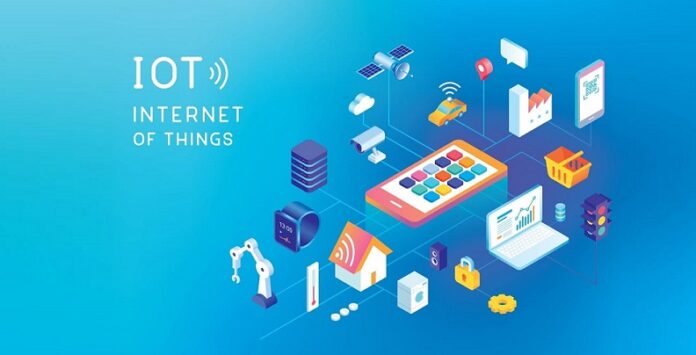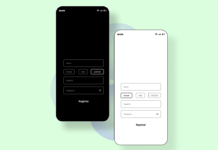When designing an IoT system, one of the most important considerations is what connectivity solution we are going to use to transfer data between the different devices. First, there are many connectivity options we can choose from: from Wi-Fi and Bluetooth, cellular IoT connectivity, to relatively new connectivity options like LPWAN and NB-IoT.
The thing is, there is no one-size-fits-all answer to what type of connectivity is best for you, and IoT decision-makers must weigh various factors like the objective of the IoT system, how many devices are going to be implemented, and others.
On the other hand, we also need to consider scalability. With more and more connected devices, the amount of data transferred will also increase exponentially. Meaning, we need a connectivity solution that can grow together with our IoT system as our business grows.
So, choosing the right connectivity solution is very important in ensuring the success of our IoT system and its growth.
In this guide, we will have a more in-depth discussion of the popular IoT connectivity solutions and what they are bringing to the table for different use cases.
1. Wi-Fi and Bluetooth
Bluetooth and Wi-Fi belong to the short-range, wireless connectivity group of IoT connectivity options.
We define short-range wireless connectivity options as a connectivity solution where the distance between the device collecting the data (sensor) and the device receiving the data is less than 300 feet.
Wi-Fi is one of the most popular connectivity solutions in this category, along with Bluetooth. Bluetooth can be divided into various different types and the newest Bluetooth 5 Low Energy (LE) can theoretically reach 400 meters (1300+ feet) in range, but most Bluetooth available in the market can only operate up to 33 feet (10m). Wi-Fi has a maximum range of around 160 feet (50 m) but transfers data at much higher speeds than Bluetooth.
Specific to IoT, the Wi-Fi alliance introduced the Wi-Fi Halow connectivity, which promises ten times the range of regular Wi-Fi and 100 times the coverage area, promising a 3200 feet (1 km) maximum range. However, the development of Wi-Fi Halow as a strong solution for the IoT market is still very slow.
2. Cellular IoT Connectivity
The cellular connection remains one of the most popular connectivity solutions for IoT systems that require long-distance connectivity and reliable bandwidth.
Cellular remains the best option if we are thinking about scalability, simply because cellular coverage is available virtually everywhere all over the world, and it is capable of sending a high amount of data at a reliable speed with 4G LTE and (soon) 5G. This allows us to connect two devices located in different countries to an IoT network. For example, Truphone for Things will allow you to connect and manage IoT devices in more than 100 countries.
However, it’s not saying that cellular IoT is perfect, as it has its own weaknesses. The cellular connection is always famous for its high power consumption, and there’s the issue of the increased hardware costs (the hardware must have SIM/eSIM), and monthly data plan costs.
Newer cellular technologies like LTE M1, LTE Cat-0, and NB-IoT (NarrowBand IoT), however, can now provide lower power consumption while maintaining a fairly high bandwidth. NB-IoT operates with very low power consumption, but can still reach 250 kbps max throughput. LTE M1 (or eMTC), on the other hand, can reach 1 Mbps but with relatively high latency (10-15ms)
In cellular data connectivity, we can expect newer technologies to be implemented especially to lower the power consumption while maintaining cellular SIM’s benefit in range and optimal bandwidth.
3. Z-Wave, Zigbee, and NFC
These three also belong to the short-range, wireless IoT connectivity option, but they have more specific use cases compared to Wi-Fi and Bluetooth.
NFC (Near-Field communication) has fairly limited use case applications due to its point-to-point topology and is mainly useful in smartphone automation. But in these specific use cases like smartphone payment, substituting hotel key cards, and home automation, NFC is often the most practical and convenient option.
Both Zigbee and Z-Wave utilize the mesh-network topology, where they use the interconnected devices to transfer data to a specific device/sensor, creating a mesh-shaped network in the process. Both Zigbee and Z-Wave have roughly 30 feet of maximum range, and both have very similar use cases, especially in smart home IoT implementations.
ZigBee is currently more popular due to its open-source nature (so it supports more products at the moment) and because it is faster than Z-Wave (250 kbps vs 100kbps).
4. LPWAN
LPWAN stands for Low-Power Wide Area Network, so it’s characterized by two things: low hardware power consumption and wide coverage. LPWAN can cover more than 30,000 feet (10 km+) in a dense area, however, it typically has relatively low bandwidth (below 50 kbps).
LoRaWan and Sigfox are two of the more popular LPWAN implementations. LoRa can cover 15 km in range and up to 50 kbps in data transfer, while Sigfox can cover 50km in range but only 10kbps bandwidth.
Other LPWAN technologies, however, are currently being developed to either cover more range (like Ingenu that can cover 500 km in range) or more bandwidth. Weightless (W.N.P), for example, has a 5km coverage area but can reach 10Mbps in bandwidth.
In the future, we can expect more implementations of LPWAN and advancements in technology to allow more reliable bandwidth and lower latency while maintaining its very low power consumption and very high coverage range.
End Words
Choosing the right IoT connectivity option is very important to ensure we can achieve the objective of the IoT network. So, it’s very important to pick the right priority between bandwidth capability, coverage range, and power consumption. For example, cellular connectivity like Truphone for Things has high bandwidth and high coverage range but has its downside in high power consumption.
At the moment, there’s no perfect IoT connectivity that offers high coverage range, high bandwidth, and low power consumption. However, new technologies are being developed to pursue this, and we can expect our IoT connectivity options to get better in the near future.








